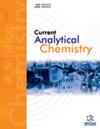Preparation and characterization of paromomycin encapsulated in lecithin-chitosan nanoparticles for the topical treatment of cutaneous leishmaniasis
IF 1.7
4区 化学
Q3 CHEMISTRY, ANALYTICAL
引用次数: 0
Abstract
Introduction: Leishmaniasis is a disease caused by the Leishmania protozoa, with Cutaneous Leishmaniasis (CL) being the most common form of the illness. Paromomycin (PM) has recently garnered increased interest for its effectiveness against Leishmania, but it is hindered by limited efficacy, low oral bioavailability, and rapid clearance. As far as we know, there have been no studies examining the impact of nano lecithin-chitosan-containing paromomycin (Nano-PM) on CL. Therefore, the objective of the present study was to create Nano-PM and assess its effects on the promastigotes in vitro and on the lesions caused by Leishmania major in the BALB/c mice model in vivo. Methods: The loading of PM into lecithin-chitosan nanoparticles was achieved using the ionic gelation method, and the resulting nanoparticles were characterized. The IC50 values for PM, Glucantim, and Nano-PM against promastigotes were determined after 24, 48, and 72 hours of treatment. The viability of promastigotes was assessed using the MTT assay. The Nano-PM formulation was administered intramuscularly to mice for a period of 28 days, during which lesion sizes were measured weekly. Furthermore, the parasite load in the infected mice was quantified using quantitative realtime polymerase chain reaction (qPCR). Results: IC50 of Nano-PM was significantly lower than Glucantim (p < 0.0001 after24 h incubation, p = 0.013 for 48h and p < 0.0001 for 72 h) and PM (p < 0.0001 after24 h, p = 0.003 for 48h and p < 0.0001 for 72h). All concentrations of Nano-PM had the highest toxicity on promastigotes in comparison with other groups after 24, 48, and 72 h treatment. Moreover, a significant reduction in the lesion size was found in the Nano-PM group in comparison with the control group after three (p = 0.0369) and four (p = 0.0009) weeks of treatment. More importantly, Nano-PM significantly reduced the parasite load compared to the control and the lecithin-chitosan groups (p = 0.001 for both). Conclusion: Our findings showed that Nano-PM had lower toxicity (lower IC50) on promastigotes compared to Glucantim and PM. Moreover, Nano-PM treated mice showed reduced lesion size compared to the control group. Additionally, Nano-PM led to a significant decrease in parasite burden compared to the control group and the lecithin-chitosan group. Nevertheless, more complementary research is needed to approve our findings.用于局部治疗皮肤利什曼病的卵磷脂-壳聚糖纳米颗粒中包裹的副霉素的制备与表征
简介利什曼病是一种由利什曼原虫引起的疾病,其中皮肤利什曼病(CL)是最常见的一种。近来,副黏菌素(Paromomycin,PM)因其对利什曼原虫的疗效而受到越来越多的关注,但其疗效有限、口服生物利用度低、清除速度快等问题却阻碍了它的发展。据我们所知,目前还没有研究探讨含纳米卵磷脂-壳聚糖的副黏菌素(纳米副黏菌素)对利什曼原虫的影响。因此,本研究的目的是制备纳米对氨基霉素,并评估其在体外对原生原虫的影响,以及在 BALB/c 小鼠模型体内对利什曼原虫引起的病变的影响。研究方法采用离子凝胶法将 PM 添加到卵磷脂-壳聚糖纳米颗粒中,并对得到的纳米颗粒进行表征。在处理 24、48 和 72 小时后,测定了 PM、Glucantim 和 Nano-PM 对原虫的 IC50 值。原虫的存活率采用 MTT 法进行评估。小鼠肌肉注射 Nano-PM 制剂 28 天,期间每周测量一次病灶大小。此外,还使用定量实时聚合酶链反应(qPCR)对感染小鼠体内的寄生虫量进行了量化。结果纳米 PM 的 IC50 明显低于 Glucantim(孵育 24 小时后 p < 0.0001,孵育 48 小时后 p = 0.013,孵育 72 小时后 p < 0.0001)和 PM(孵育 24 小时后 p < 0.0001,孵育 48 小时后 p = 0.003,孵育 72 小时后 p < 0.0001)。与其他组相比,所有浓度的纳米 PM 在处理 24、48 和 72 小时后对原原体的毒性都最高。此外,纳米 PM 组与对照组相比,在治疗三周(p = 0.0369)和四周(p = 0.0009)后,病灶面积明显缩小。更重要的是,与对照组和卵磷脂-壳聚糖组相比,纳米 PM 能显著减少寄生虫数量(两组的 p = 0.001)。结论我们的研究结果表明,与 Glucantim 和 PM 相比,Nano-PM 对原虫的毒性更低(IC50 更低)。此外,与对照组相比,经 Nano-PM 治疗的小鼠的病变面积有所缩小。此外,与对照组和卵磷脂-壳聚糖组相比,纳米 PM 还能显著减少寄生虫负担。尽管如此,还需要更多的补充研究来验证我们的发现。
本文章由计算机程序翻译,如有差异,请以英文原文为准。
求助全文
约1分钟内获得全文
求助全文
来源期刊

Current Analytical Chemistry
化学-分析化学
CiteScore
4.10
自引率
0.00%
发文量
90
审稿时长
9 months
期刊介绍:
Current Analytical Chemistry publishes full-length/mini reviews and original research articles on the most recent advances in analytical chemistry. All aspects of the field are represented, including analytical methodology, techniques, and instrumentation in both fundamental and applied research topics of interest to the broad readership of the journal. Current Analytical Chemistry strives to serve as an authoritative source of information in analytical chemistry and in related applications such as biochemical analysis, pharmaceutical research, quantitative biological imaging, novel sensors, and nanotechnology.
 求助内容:
求助内容: 应助结果提醒方式:
应助结果提醒方式:


